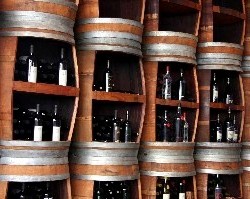Scientists from the National Institute for Materials Science in Tsukuba, Japan and University of Tsukuba found that soaking pellets of an iron-based compound in heated alcoholic beverages for 24 hours increases the pellets’ superconducting ability. Their findings appear in the current issue of the journal Superconductor Science and Technology (free registration required).
Creating a faster process for increasing iron’s superconductivity can have many economic benefits and applications, particularly for increasing electric power transmission and energy efficiency. Iron-based compounds can become superconductive after being exposed to air, but the process can take up to several months. This study suggests that superconductivity can be induced in one day.
The researchers tested a range of alcoholic beverages: red and white wine, beer, Japanese sake, shochu — a distilled beverage similar to vodka — and whiskey. Samples of the iron-based compound were immersed in each beverage, heated at 70 degrees C (158 F) for 24 hours, and then analyzed.
Red wine was shown to induce the best superconducting properties, but alcohol content may not be the only factor at work, since beverages with the same alcohol concentration showed a significant difference. Iron-based compounds undergo a process called magnetic order where the molecules align in a regular pattern. To achieve superconductivity, magnetic order must be suppressed.
In order to become superconductive, elements in the iron-based compounds had to be substituted with elements present in alcohol. The exact mechanism behind this effect is largely unknown, however. The researchers suggest that it may be due to the insertion of electrically charged particles into the layers of the compound.
An alternative hypothesis is that the alcoholic beverages help to supply oxygen into the sample pellets, which in turn causes superconductivity. The researchers say the structure composition of the beverages need further analysis to identify the key factor in inducing superconductivity.
* * *


 RSS - Posts
RSS - Posts
You must be logged in to post a comment.